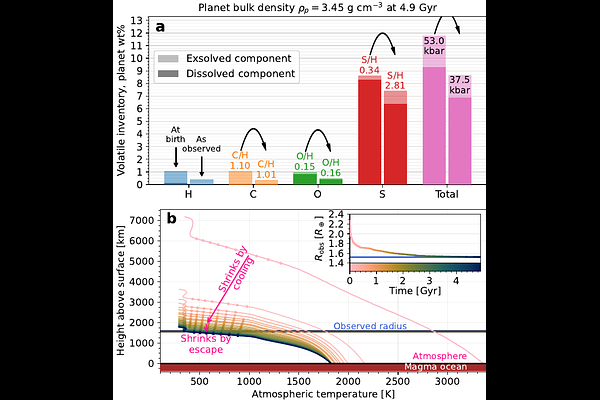Volatile-rich evolution of molten super-Earth L 98-59 d

Volatile-rich evolution of molten super-Earth L 98-59 d
Harrison Nicholls, Tim Lichtenberg, Richard D. Chatterjee, Claire Marie Guimond, Emma Postolec, Raymond T. Pierrehumbert
AbstractSmall low-density exoplanets are sculpted by strong stellar irradiation but their origin is unknown. Two competing scenarios are that they formed either with rocky interiors and H2-He atmospheres (`gas-dwarfs'), or instead with bulk compositions dominated by H2O phases (`water-worlds'). Observations of L 98-59 d have revealed its unusually low density and spectral characteristics, opening a window for disentangling its origin. We constrain the possible range of evolutionary histories linking L 98-59 d's birth conditions to these observations, using a coupled atmosphere-interior modelling framework. Observations are explained by a chemically-reducing mantle and early substantial (>1.8 mass%) sulfur and hydrogen content, inconsistent with both the gas-dwarf and water-world origin scenarios. Observed spectral features are explained by in-situ photochemical production of SO2 in an H2 background. L 98-59 d's interior comprises a permanent magma ocean, allowing long-term retention of volatiles within its interior over billions of years, consistent with surveyed Kepler Survey trends. Modelling of the `cosmic shoreline' suggests that early volatile-metal budget is a determinant of atmospheric retention - here, we explicitly show that large initial budgets can explain JWST observations of some super-Earth planets (including DDT targets). In breaking with the supposed gas-dwarf/water-world dichotomy, we reveal an evolutionary pathway defined by high-molar-mass atmospheres overlying magma oceans, and invite a more nuanced taxonomy of small exoplanets.